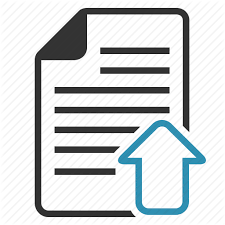ANALISA KELAYAKAN EKONOMI DAN FINANSIAL KERETA BANDAR UDARA RADEN INTEN II LAMPUNG
Abstract views: 608 | pdf downloads: 829
Abstract
Lampung Province continues to experience increased population mobility and economic growth considering its location as the gateway to the island of Sumatra. The addition of transportation modes is a solution to the increasing need for comprehensive and optimal transportation. One of the efforts to increase the mode is the construction of a railway line to Raden Inten II Airport which is targeted to become an international airport. In this study, an analysis of the financial and economic feasibility of the railway line development was carried out with a quantitative approach using Life Cycle Costing (LCC) analysis. The calculations are made using several assumptions, including the increase in operating and maintenance costs, scenarios of passenger expectations and progress at each stage of construction, while the LCC analysis simulates the tariff price and year of concession. A project is declared economically and financially feasible by comparing the feasibility parameters such as NPV, BCR, IRR, and Payback Period. The results showed that in this optimistic scenario the airport train construction was declared economically and financially feasible.
References
Badan Pusat Statistik Tranportasi Lampung 2018. Data Jumlah Kereta Api di Provinsi Lampung: Berita Resmi Statistik.
Badan Pusat Statistik Tranportasi Lampung 2019. Data Produk Domestik Regional Bruto Provinsi Lampung: Berita Resmi Statistik.
Badan Perencanaan Pembangunan Nasional Jakarta. 2015. Penyiapan Dokumen Proyek Investasi Outline Business Case and Project Monorail Batam. Laporan Rancangan Kajian Akhir.
Clara Virena Gustinan. 2017. Analisa Kelayakan Ekonomi dan Finansial Kereta Bandara Tanjung Karang-Radein Inten II. Skripsi, Universitas Lampung.
Fazlina, Aleksander, Amril. 2019. Analisis Kelayakan Finansial Pada Proyek Pembangunan Kereta Api Jalur Ganda Gedebage-Cicalengka. Jurnal Teknik Sipil, Universitas Lampung.
Ghavi Yuda Sefaji, Soedwiwahjono, Kuswanto Nurhadi. 2018. Kesiapan Aksesbilitas Stasiun Solo Balapan dalam Melayani Trayek Kereta Api Penghubung Bandara Adi Soematmo dan Kota Surakarta. Jurnal Fakultas Teknik, Universitas Sebelas Maret.
Hendra Taufik, Nulvi Rizaldi. Analisa Kelayakan Ekonomi Pembangunan Jalur Kereta Api Minangkabau International Airport (MIA) Sumatera Barat. Jurusan Teknik Sipil, Universitas Riau, Pekanbaru.
Hemanto Dwiatmoko. 2016. Perencanaan Pembangunan Kereta Api. Jakarta: Kencana Predamedia Group.
Herman. 2016. Kajian Awal Kelayakan Finansial Investasi Jalan Rel. Jurnal Teknik Sipil, Insititut Teknologi Nasional, Bandung.
Kevin Andrea dan Ervina Ahyudanari. 2018. Kelayakan Finansial Kereta Bandara New Yogyakarta International Airport dengan Analisis Sesitivitas Terhadap Perubahan Kebutuhan Lahan. Jurnal Teknik Sipil, Insititut Teknologi Sepuluh November.
Kementerian PUPR Pusat Pendidikan dan Pelatihan Sumber Daya Air dan Kontruksi ,2017. Modul 5 Kekayakan Finansial. Bandung.
Sipil. Universitas Lampung
Oldebes Temy Giantatara.2018. Analisis Ekonomi dan Finansial Kereta Cepat Jakarta-Bandung. Jurnal Teknik Sipil, Universitas Lampung
Penyusunan Dokumen Kajian Kereta Api di Provinsi Lampung. 2018. Policy Paper.
Rindri Mutohir, Dwi Herianto, Priyo Pratomo. 2017. Perencanaan Moda Transportasi Umum Berbasis Kereta Api Rute Tanjung Karang-Bandara Radin Inten II. Jurnal Teknis Sipil. Universtitas Lampung
Copyright (c) 2021 Jurnal Infrastruktur

This work is licensed under a Creative Commons Attribution-NonCommercial-ShareAlike 4.0 International License.














